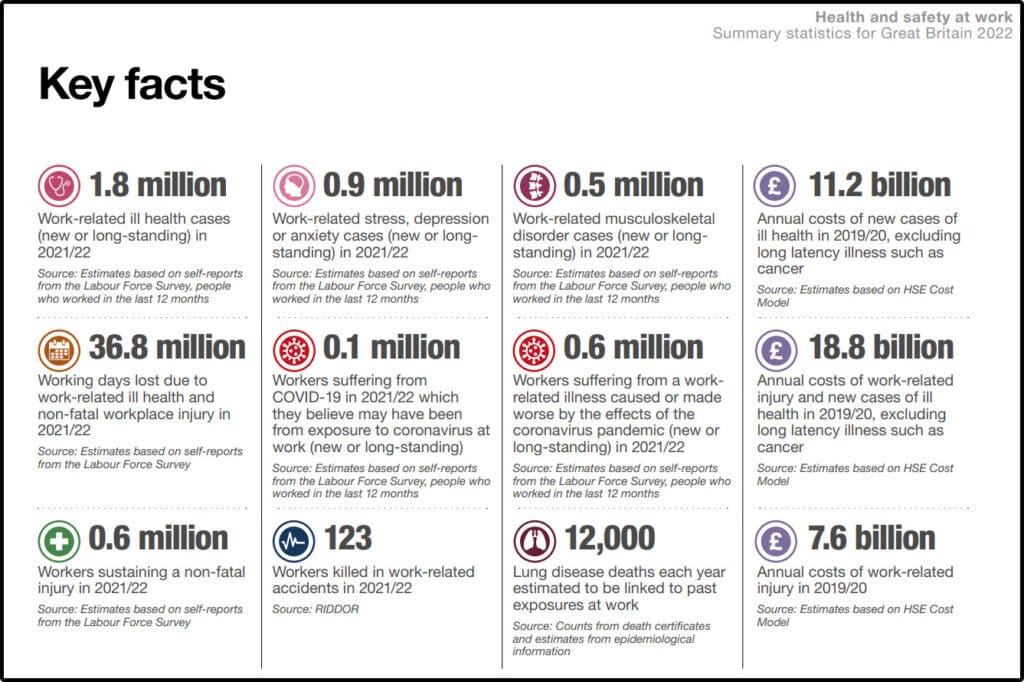The HSE release their annual work-related ill-health and injury statistics
Work-related injuries and new cases of ill health (excluding long latency illness) totalled an estimated cost of £18.8bn to the UK economy in 2019/20
According to the recently-released HSE annual work-related ill-health and injury statistics, Stress and Mental Health is the Number one Cause of Work-related ill health, with an estimated 914,000 cases – making up more than half of the estimated 1.8 million self-reported work-related new or longstanding ill-health cases.
Moreover, the report shows a 28% rise in non-fatal injuries. The statistics show that trends in accident type remain largely unchanged from previous reports; Slips, Trips and Falls account for 30% of injuries, Handling, Lifting or Carrying account for 18% and 9% of overall non-fatal injuries are attributed to Being Struck by a Moving Object.
The infographic below illustrated the key facts that headline the statistics:

Work-Related Fatal Injuries in Great Britain.
The HSE Annual Statistics published in July 2022 reported that tragically, 123 workers were killed in work-related accidents in 2021/22, a reduction of 22 from the previous year.
The statistics include headline numbers on deaths resulting from a work-related accident in 2021/22 that were reportable under the Reporting of Injuries, Diseases and Dangerous Occurrences Regulations (RIDDOR) to any of the main enforcing authorities for health and safety at work The figures do not include deaths arising from occupational diseases or diseases arising from certain occupational exposures (including Covid-19).
The industries with the highest fatal injuries were construction (30), agriculture, forestry, and fishing (22), and manufacturing (22). Agriculture, forestry and fishing has the highest rate of fatal injury per 100,000 workers. For more detail, read the full report here.
In Conclusion
In busy workplace environments involving people some accidents will always happen, but the risk of accidents and injury can be greatly reduced if employers (and workers) follow the law, health and safety regulations and supporting guidance provided by the HSE. The law requires employers to take reasonable steps to safeguard their employees’ safety. Given the potential for severe consequences for injured employees, the HSE takes these responsibilities very seriously and prosecutes employers whose failure to comply with the rules results in serious injury or death.






